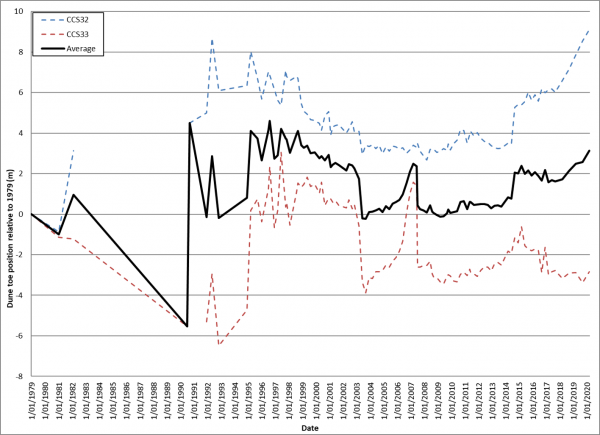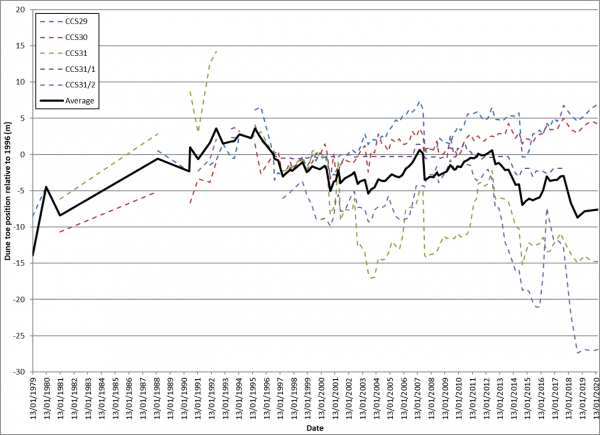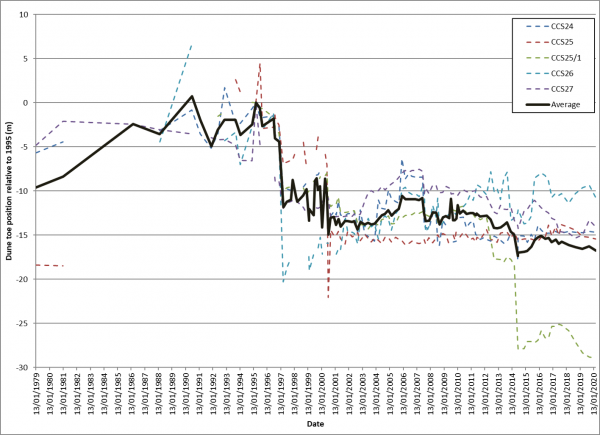Shoreline change
Why we monitor shoreline change
This indicator measures shoreline change (erosion and accretion) at a subset of sandy beaches on the Coromandel Peninsula.
Sandy beaches are popular recreational assets for the community and many of our coastal housing developments have been built very close to the shoreline.
Sandy beaches are naturally prone to changes in shoreline position. Shoreline change occurs in response to major storms and changes in climate patterns over longer time periods.
Houses and infrastructure that have been built close to the sea are vulnerable to these natural fluctuations. Engineered structures such as seawalls are sometimes placed on the beach to protect at-risk assets, but these can damage the natural and recreational values of the beach and can transfer the erosion risk to the adjacent coastline.
Councils need to understand the extent of natural beach change to sustainably guide existing and new developments on these coasts. A key focus of the New Zealand Coastal Policy Statement (NZCPS 2010) is reducing, and where possible avoiding, coastal hazard risk and in turn this is an important part of regional and district council plans. Shoreline change information is one tool that can be used to understand which areas of coastline are at risk from erosion due to natural processes over periods of decades.
What's happening?
This indicator reports changes in the location of the dune toe, which is a robust measurement of shoreline change that can threaten coastal development.
Individual storms can cause the dune to erode by several metres over periods of hours or days. This erosion often recovers naturally in the following months. It can take many years for a beach to recover from a major storm. A trend for erosion or beach building can also occur over a decadal cycle, usually in response to climatic cycles, such as ENSO (the El Niño - La Niña cycle). Our data shows that in general, the position of the dune toe along the Coromandel beaches fluctuates, but there is no clear widespread long term (permanent) shoreline change. The results of this indicator show that shorelines don’t all respond in the same way to any one storm. While most beaches seem quite stable now, a long-term trend for erosion may occur in response to climate change due to either accelerated sea level rise or a modified wave climate.
Methods - how we monitor
Results - data and trends
Download the data file
This Excel spreadsheet contains the source data for this indicator and its graphs.
When this indicator is updated
This indicator is updated every two years, with the next update scheduled for 2021/22.
Updated 25 June 2020.








To ask for help or report a problem, contact us
Tell us how we can improve the information on this page. (optional)